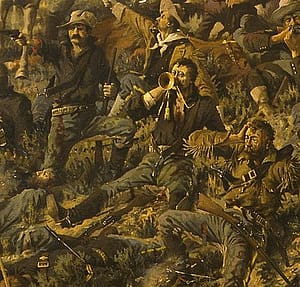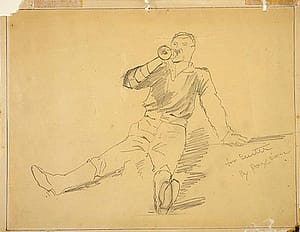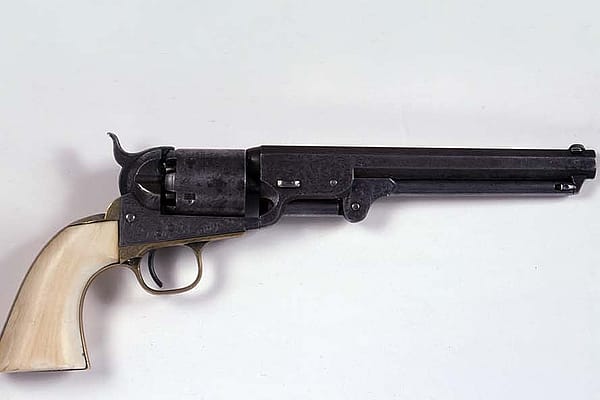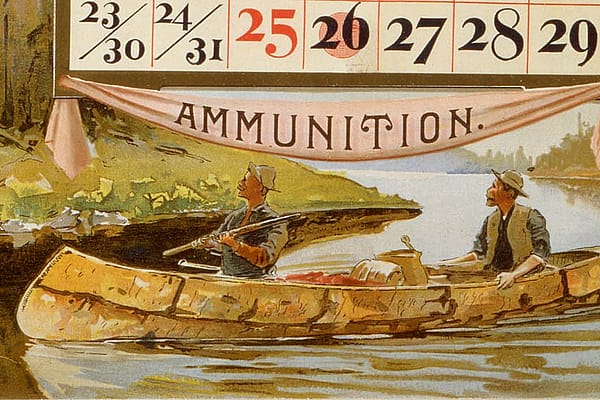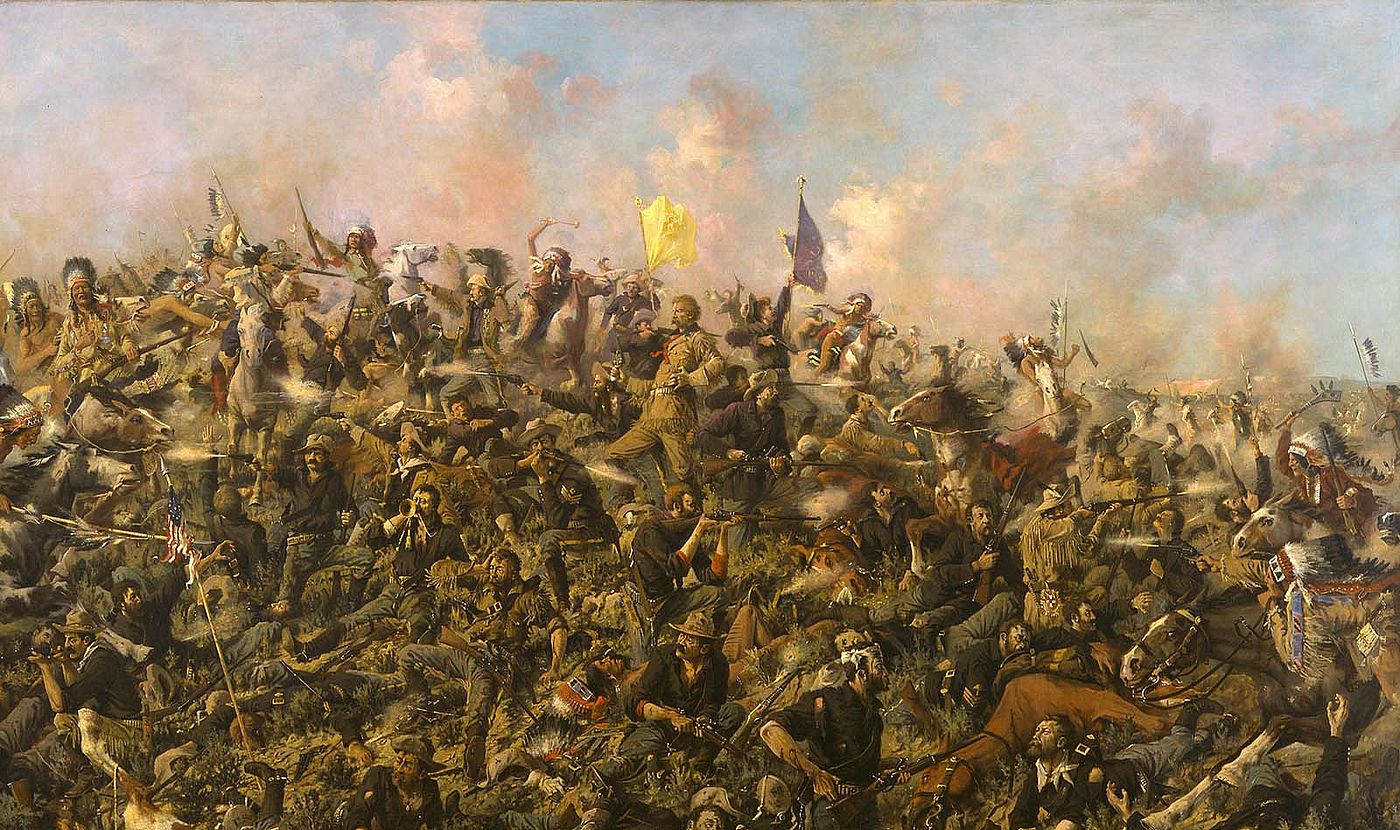
Treasures from Our West: Edgar S. Paxson’s “Custer’s Last Stand”
Originally featured in Points West magazine in Fall 2008
Custer’s Last Stand painting and sketches by Edgar S. Paxson
Edgar S. Paxson came to Montana in 1877, a year after the Battle of Little Bighorn. The artist was fascinated by the battle and said, “I will paint that scene…during my leisure hours. I kept dabbling with brush. Each day I saw some improvement.” He was determined to paint the battle scene as accurately as possible, “…and for twenty years gathered data, sifted and resifted it, conversed with participants on either side, visited the scene, and became as familiar with the ground and the circumstances as with my own home.”
Paxson interviewed Plains Indian leaders, such as Rain-In-the-Face, Gall, and Sitting Bull, as well as ninety-six soldiers from the related campaign. He also contacted Edward S. Godfrey, a lieutenant in Captain Benteen’s force who witnessed the scene after the battle.
About 1895, Paxson began his work on the final six-foot by nine-foot canvas, Custer’s Last Stand. Amazingly, the painting includes more than two hundred figures. Paxson sketched each figure separately before adding him to the canvas.
In his sketch of a dying trumpeter, for example, it is evident that the artist was experimenting with the natural placement of the left foot, along with shading and the drapery of the uniform. When comparing the same figure as incorporated onto the final canvas (detail at upper right), few subtle changes are present. The sketch of the trumpeter (at right) offers a rare glimpse into the artist’s working process.
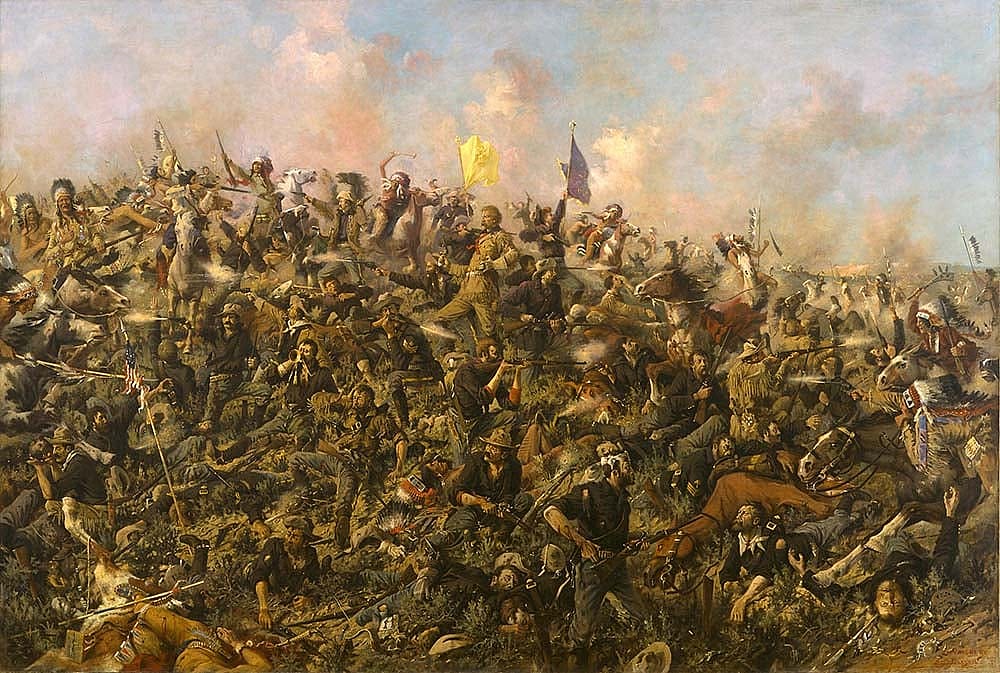
At right: Trumpeter, enlarged detail; and Paxson’s Study for Dying Trumpeter, ca. 1897. Pencil on paper, 9 x 7.5 inches. 27.71.11
Below: Edgar Samuel Paxson (1852 – 1919). Custer’s Last Stand, 1899. Oil on canvas, 70.5 x 106 inches. 19.69
Post 090
Written By
Nancy McClure
Nancy now does Grants & Foundations Relations for the Center of the West's Development Department, but was formerly the Content Producer for the Center's Public Relations Department, where her work included writing and updating website content, publicizing events, copy editing, working with images, and producing the e-newsletter Western Wire. Her current job is seeking and applying for funding from government grants and private foundations. In her spare time, Nancy enjoys photography, reading, flower gardening, and playing the flute.
